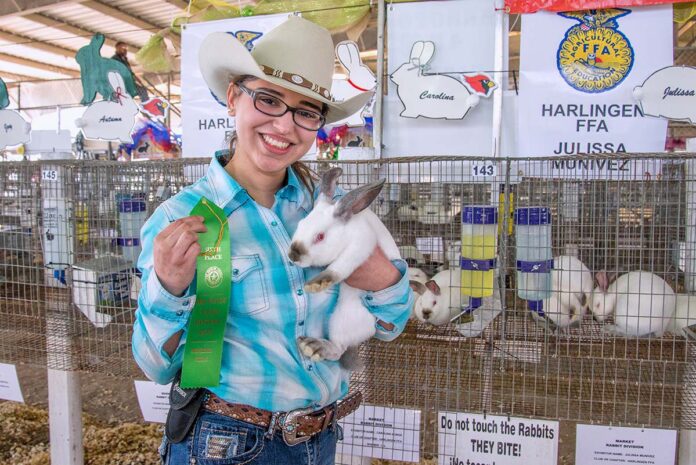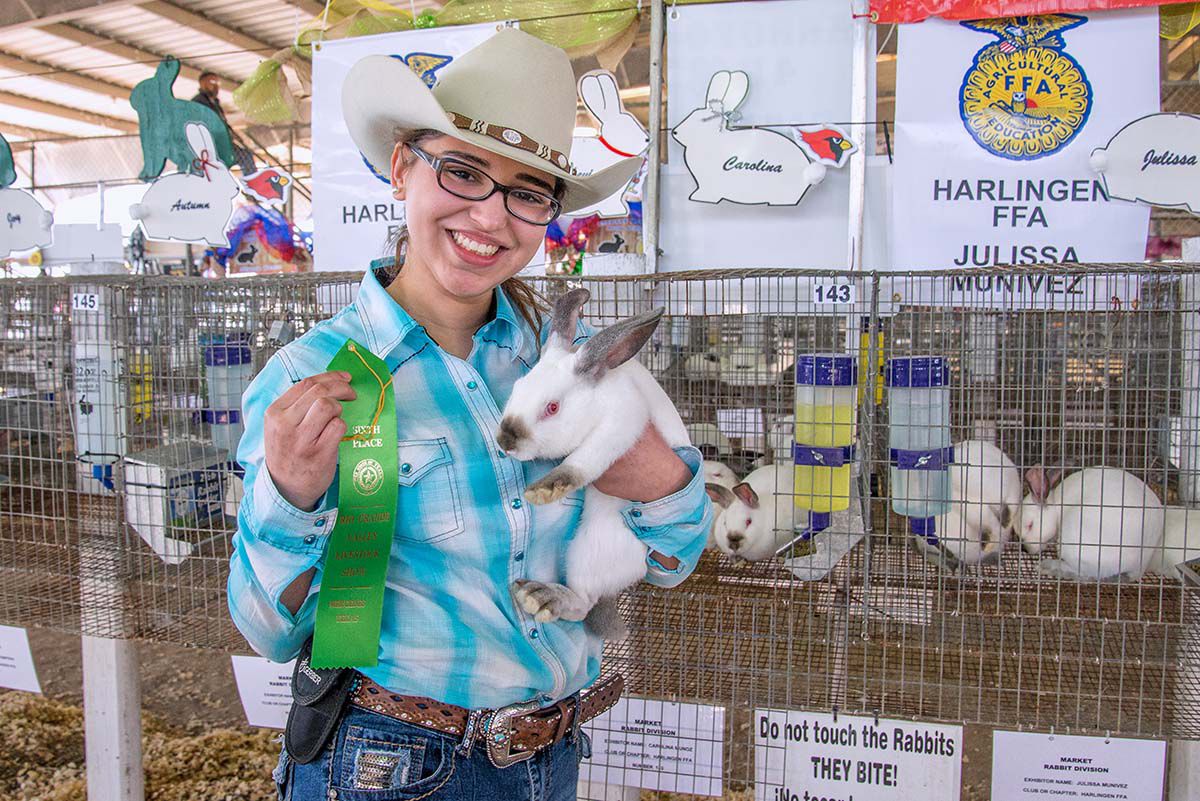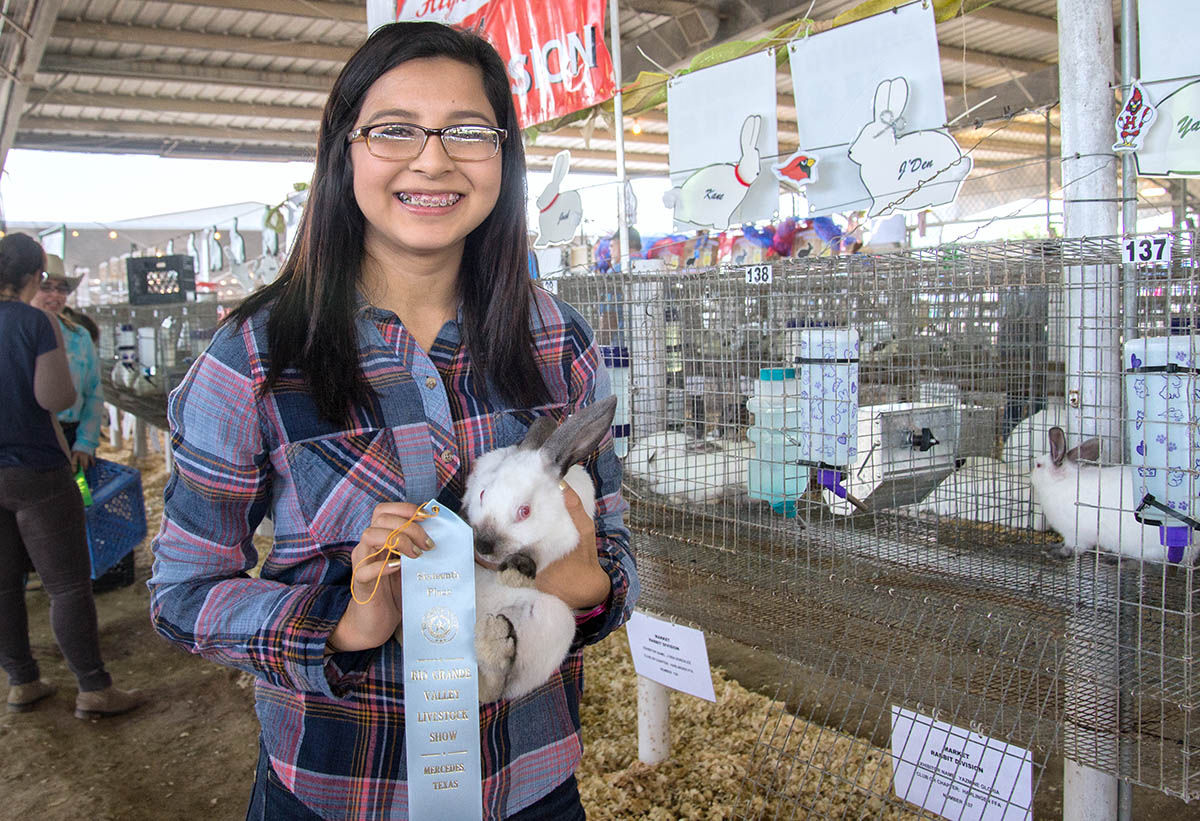MERCEDES — They were adorable — with their fluffy tails, little noses and little eyes.
However, there was a time to be cute and that was before 8 a.m. yesterday at the Rio Grande Valley Livestock Show.
This large group of rabbits had a job to do and so did their handlers.
The time for rabbit talk over coffee and feed had passed.
Now, it was time to look like the market rabbits they were prepared to be.
Once out of their cages and in the judging area, Judge Jim Rowland ran his hands up and down the animal, checking for meat type and smoothness, sometimes once, sometimes twice.
If he really liked what he saw, he ran his hands over the animal inspecting several more times. That’s just what he did with Carolina Munoz’s three California breed rabbits.
It was the 17-year-old Harlingen High School student’s second year out of the pen and she was ready.
Prior to judging, she and her classmate Yasmine Gloria, 16, waited in the staging area.
The sophomores were nervous because, according to Munoz and Gloria, “It all depends on the judge.”
“Every judge is different. One might look at body structure. The other might look at how round or big they are,” Munoz said.
“You have to be able to judge them yourself, too.”
It was Gloria’s first year, so she showed her three California breed rabbits.
Both girls chose to have California breed rabbits, a more popular breed they both said is used for show.
“It’s a good quality rabbit opposed to other breeds,” Munoz said.
Preparing her rabbits, Gloria said, was a huge responsibility.
From going to the Ag Barn where they are housed twice a day to feeding to cleaning them, raising a rabbit for show takes a lot of hard work.
Any FFA member will tell you that.
Once the group before them was finished, Munoz and Gloria’s group were up.
Both girls scooped up their white and gray cotton-tailed animals and walked to the judging station.
While judging, Rowland looked over Munoz’s rabbits a few times, resulting in a sixth-place ribbon for her.
“I did better than last year,” she said. “I am proud of myself. I’m glad I have two more years because I can always do better next year. If it weren’t for my parents and my support system, I probably wouldn’t be here.”
Gloria placed 16th. However, that did not discourage her. She’s already planning what she will do differently next year.
What people may not know is that FFA members work from the beginning of the year, sometimes longer, to raise the animals they show.
It’s the dedication and responsibility that shows more than how many ribbons they have received.
The long hours spent at the Ag Barn during the week and on the weekends involve precision and hard work. While some students spend their free time playing video games, students like Munoz and Gloria spend their free time caring for their animals.
As the livestock show winds down, the rabbits will be sold to market, a fact that Gloria is very aware of.
After spending so much time with an animal, one often grows attached to the rabbits.
“Yesterday, it hit me. At the end of the week they will be gone,” she said.
A market rabbit is a project by FFA students. Successful market rabbits that are shown in competitions, like the Rio Grande Valley Livestock Show, have been raised from infancy by their handler. When sold at market after competition the rabbit can be used one of four ways — breeding, fiber production, fur production or meat production.
During judging, the judge looks for a number of things. Jim Rowland, a very experienced judge of market rabbits, touched and ran his
hands over the rabbits, looking for key features, which separate the top meat rabbits from the bottom ones.
Starting with the shoulders, he looks for how thick it is. While he moves his fingers across the ribs, back, loins and hind, he looks for a smooth firmness.






